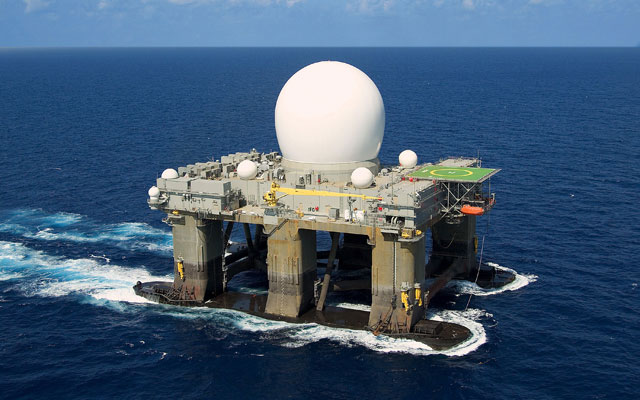The U.S. recently decided to move one of its most powerful radars, the Sea-Based X-Band radar (SBX), closer to North Korea to monitor the country’s ballistic missile threat. The SBX is capable of detecting a baseball hit out of a ballpark from more than 3,000 miles away. It provides an incredibly detailed look at incoming ballistic missiles and helps to discriminate real warheads from other objects.
As Heritage’s expert Bruce Klingner notes, the move is better late than never, as the U.S. needs both the resolve and resources to help to mitigate the dangerous situation on the Korean Peninsula.
The SBX deployment is a welcome departure from then-Secretary of Defense Robert Gates’s refusal to grant permission to U.S. Northern Command to use radar for monitoring North Korea’s 2009 launch and is the latest Obama Administration reversal caused by North Korea.
In March, the Administration announced it will increase the number of Ground-Based Midcourse Defense (GMD) interceptors in the U.S. to 44, the same number the Bush Administration wanted to deploy. In his first year in office, President Obama decided to cap the number of GMD interceptors at 30 because he thought that the ballistic missile threat was not advancing as rapidly as the Bush Administration expected. Turns out he was wrong, and if he proceeded with the original plan, he wouldn’t have to play catch up to the North Korean ballistic missile threat and waste taxpayers’ dollars in the process.
The Administration also decided to “restructure” the SM-3 Block IIB missile, which was supposed to protect the U.S. from a long-range ballistic missile threat, especially from Iran. This step was unwise, as the next President might easily find himself playing the “ballistic missile catch up” game with Tehran in the future. Both Iran and North Korea are very public regarding the importance they place on their ballistic missile programs and cooperate closely on the issue. It would take only 33 minutes for a missile to reach the U.S. from anywhere in the world.
The U.S. is also strengthening its conventional posture on the Korean Peninsula. On Sunday, the U.S. sent F-22 stealth fighter jets to participate in military exercises with South Korea, and the U.S. Navy is deploying at least one of its missile defense-capable destroyers to the South Korean coast. Two U.S. B-2 stealth bombers also flew a training mission in South Korea last weekend.
These are steps in the right direction, but in the long term, U.S. strategy in the Pacific theatre is undermined by insufficient resources, with even more cuts proposed in President Obama’s budget. In March, Deputy Secretary of Defense Ashton Carter stated that the cuts could reduce the operations of Navy ships and aircraft in the Asia–Pacific region by as much as one-third and leave gaps in the availability of Marine Amphibious Ready Groups. Carter later traveled to Asia to mollify concerns about these cuts, concerns caused partly by Carter’s own remarks.
The latest threats from Pyongyang should spur Washington to reverse these dangerous defense cuts and fully restore all U.S. missile defense programs. The U.S. should also reiterate its commitments to its allies in the region and take further action against North Korean illegal activities.
